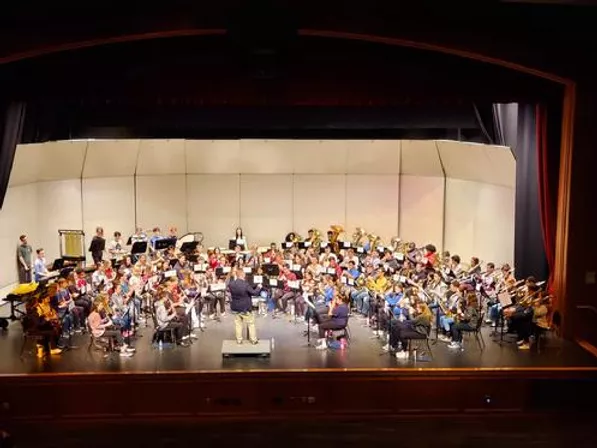Sophomore Alex Polimeni’s Photography is “Out of This World”
At Hubble Space Telescope Mission Control at NASA’s Goddard Space Flight Center in Maryland.
October 12, 2015
Alex Polimeni, a sophomore here at FTHS, has a job that most children, teenagers, and adults can only dream of… and an opportunity to work at space shuttle launches and experiment with new software is only a part of his exciting work experience! The Patriot Press had the chance to sit down and talk with him.
![AFSPC-5/Atlas V 501 [May 20, 2015]](https://fthspatpress.com/wp-content/uploads/2015/10/AFSPC-5-Trench-Remote-Camera-Nikon-D3200_00025_lzn.jpg)
Well my passion really began when I was about 10 years old, when I located Saturn with a little $40 telescope. It didn’t have much power at all, but seeing the magnificent ring systems around the planet really had me hooked. Later that year, I would see two of the final Space Shuttle launches, and that gave me enormous interest in the launch vehicle industry.
But, I began my career as badged news media in June 2014 at the age of 13. My first launch as media was a highly classified US Air Force Spy Satellite Escort Trio, designed to protect some of the nation’s most important military spacecraft.
What is it that you actually do for NASA?
I currently work for Spaceflight Now, which is the largest spaceflight media agency. Spaceflight Now owns and operates an office inside the secure gates within the Kennedy Space Center. This is not the visitor complex. I am a remote launch photographer. A remote launch photographer has to be accredited by a national media organization and have media clearance and background checks to be admitted to any launch complex. As a remote launch photographer, I set up cameras on tripods with sound triggers to begin
Continuous shooting at rocket ignition. The cameras are secured the day before a launch in close proximity to the rocket, while we set up more cameras and tripods at a safe
![Orb-3/Antares 130 [October 28, 2014]](https://fthspatpress.com/wp-content/uploads/2015/10/Orb-3-South-Remote-Camera-Canon-XSi_00080_lzn-1280x853.jpg)
How did you become interested in the software and photographing of launches?
I first began in 2014 when I was invited to a National Reconnaissance Office spy satellite launch by the company responsible for launching all of our military satellites, United Launch Alliance. I photographed this launch on the top of the Launch Control Center, and then began to attempt building some sort of triggering device. Over time, I have designed and built regular sound sensored camera triggers, wide angle video camera triggers, and now I am in the process of building an autonomous Infrared tracking mount for my remote cameras.

How does it feel to be one of the youngest people with NASA clearance?
I am humbled and honored to be the youngest media accredited photographer in NASA history & youngest with military clearance at the age of 13. I am the only photographer without a driver’s license, and when not using a press bus, usually I have to rely on a friend & colleague to give me a lift. I work along with some of the most amazing journalists & photographers, many I am honored to call friends. I am in awe of the stories my colleagues Share with me & I am grateful for their knowledge and guidance. During my career I have met more than 30 astronauts, had dinner with Bob Cabana (director of KSC), met Charlie Bolden (Administrator of NASA- reports to president Obama) and had a very entertaining evening at a private dinner with Bill Nye, the science guy.
What do you want to be when you are older? Do you want to continue with NASA or do something different?
When I get older, I most likely want to start out working at the US National Reconnaissance Office building some of the nation’s most clandestine spy satellites. The National Reconnaissance Office is a very interesting agency, its own existence was classified up to the 1990s after about 40 years of service. They build the world’s most advanced spy and defense satellites, and it is suspected they are decades ahead of the world in technology. To put it into perspective, in 2012 they gave NASA two free space telescopes. These telescopes were much more powerful than Hubble, and much more advanced, and they just gifted them. It makes you wonder what they actually have in orbit peering down at us, like the Keyhole Optical Intelligence satellites.
What advice can you give someone who is looking to get involved in this field?

My advice to anyone thinking about the space program would be to never give up on your dreams. Do not take no for an answer. Do not be discouraged. In Barkalow middle school I had one teacher who criticized me in front of a classroom of my peers saying I would never work in the space program because I wasn’t organized… And I had one teacher who embraced my passion and actually incorporated my passion into the curriculum (she has a thank you note from Neil DeGrasse Tyson hanging in her room). It’s easy to be discouraged from chasing your dreams, and you will be amazed at the generosity of many of the people around you. Never forget where you came from, who helped you along the way. Always be thankful of those who supported and encouraged you. Embrace your differences.
What’s your favorite quote?
“Here’s to the crazy ones, the misfits, the rebels, the troublemakers, the round pegs in the square holes… the ones who see things differently — they’re not fond of rules… You can quote them, disagree with them, glorify or vilify them, but the only thing you can’t do is ignore them because they change things… they push the human race forward, and while some may see them as the crazy ones, we see genius, because the ones who are crazy enough to think that they can change the world, are the ones who do.” – Steve Jobs (1955-2011)
To see more of Alex’s photography and read about his amazing work, visit his website at http://alexpolimeniphotography.weebly.com/.






















































